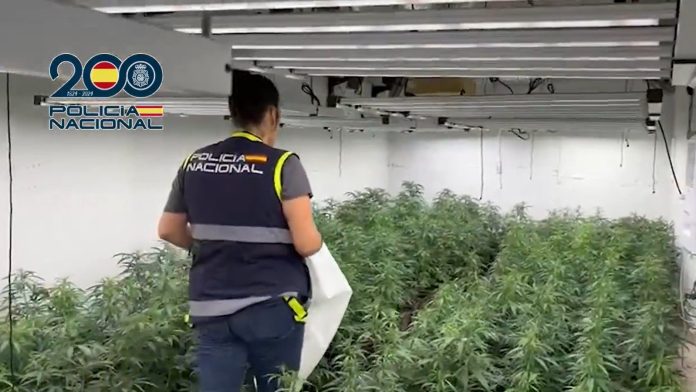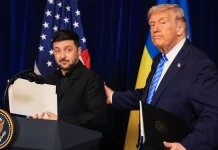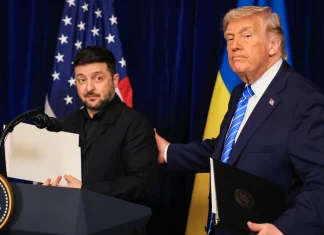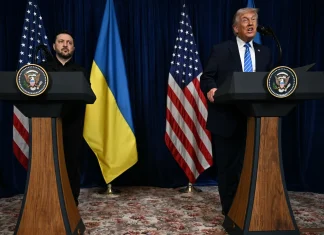The Hidden Green Highway: How Spanish Police Unraveled a Cannabis Smuggling Network to Ireland
In a tale that reads like a crime thriller—and yet plays out very much in real life—Spanish police, alongside their counterparts in Ireland and the UK, have toppled a sophisticated criminal network that hid illicit cannabis shipments in plain sight. This gang, spanning multiple countries, cloaked their operation inside sacks of animal feed, sending these deceptive pallets across borders to Ireland. It’s a story of daring police work, international cooperation, and the surprising creativity of those trafficking drugs in today’s interconnected Europe.
Unveiling the Operation: From Ordinary Feed to Bundles of Cannabis
The investigation began quietly in January 2025, when suspicious activity caught the attention of Spanish National Police. It wasn’t just any operation; this was a meticulously planned smuggling scheme involving Irish, British, and Spanish nationals who leveraged international freight companies to ship pallets widely used in agriculture—animal feed, specifically.
Imagine thousands of kilograms of grain and supplements, usually mundane and unremarkable, masking vibrant cannabis buds ingeniously concealed within. “It’s not often you see such audacity,” remarked Inspector Carlos Mendoza, who led the Spanish side of the operation. “Hiding drugs inside common agricultural products not only gave them a logistical upper hand but also distracted customs and enforcement officials who might not be looking so closely.”
From its inception, authorities suspected this was just the tip of an iceberg—one that, when melted, would reveal vast drug trafficking tunnels running beneath European commerce.
The Bust: Raids That Rumbled Through Spanish Cities
By early August 2025, police moved decisively. Twelve coordinated searches swept through Madrid, Málaga, and Seville, resulting in the seizure of incredible evidence:
- Nearly €100,000 in cash, presumably proceeds from the illicit trade.
- 630 marijuana plants—indicative of local cultivation alongside trafficking.
- A firearm and three detonators, raising alarms about the potential for violence or intimidation within the organization.
- Luxury vehicles and watches, symbols of the wealth accumulated from criminal enterprise.
- Electronic devices and documentation connecting the dots of trafficking routes and finances.
Simultaneously, Spanish authorities froze property and financial assets surpassing €2 million, aimed at dismantling the group’s economic foundations. Fourteen suspects were arrested—thirteen in Spain and one in Ireland—in a multilateral strike demonstrating the power of cross-border police collaboration.
“This was not just about stopping a shipment,” said Garda Detective Fiona Byrne, involved in the Irish investigation. “It was about striking at the heart of an international supply chain that undermines public safety and commerce integrity.”
Not Just Numbers: The Human Side of a Global Crime Network
Behind these statistics are stories of men and women caught in the machinery of transnational crime. Locals in Seville expressed a complicated mix of shock and resignation. José Ramirez, a market vendor and long-time resident, reflected, “You hear about drugs coming into the country, but to learn it was being hidden in what seems like ordinary animal feed—it shows how clever these criminals are. It’s sad because it affects our neighborhoods and families.”
Authorities estimate that since 2019, this group trafficked more than three tonnes of marijuana, consistently sending pallets month after month. Over the investigation period, around 300 kilograms were seized in Spain and Ireland—significant hauls that prevented thousands of potential users from gaining access to illegal drugs.
The lone Irish arrest, which took place in May, marks the interconnected reach of this network. The man, whose identity remains under wraps, was processed swiftly under Irish law, emphasizing the speed and seriousness with which the justice system is treating drug trafficking offenses today.
Spain’s Role: The Gateway to Europe for the Drug Trade
Spain’s geography and history make it a hotspot for trafficking drugs, especially cannabis. Sitting just across the Strait of Gibraltar from Morocco—the world’s largest exporter of hashish—and linked historically to Latin American routes, Spain has long been a major entry point for illegal substances entering Europe.
“Spain’s ports and borders are like a sieve,” noted Dr. Elena Torres, a criminologist specializing in European drug routes. “They are constantly under pressure from all sides. This case shows how traffickers innovate, finding new ways to smuggle drugs through legitimate commercial channels.”
As a European Union member, Spain’s seizures have ripple effects on the continent, but also demonstrate the limitations authorities face. Traffickers exploit legal business structures, complicating detection, and enforcement efforts.
The Bigger Picture: Crime, Commerce, and Cooperation
What does this episode tell us about the evolving nature of illegal drug trade and law enforcement’s response? First, it highlights that crime today does not observe borders, jurisdictions, or conventions. In an age where goods move seamlessly across countries, so too do criminals—and their illicit commodities.
This investigation underscores the necessity—and the growing effectiveness—of international cooperation. The involvement of Spanish police, An Garda Síochána, and the UK’s National Crime Agency serves as a model for how law enforcement can pool resources, intelligence, and operational capabilities to punch above their weight.
But it also offers a sobering reflection: trafficking networks are adaptable and resilient. Every time police intercept a shipment, another route or disguise will likely be found. The challenge remains persistent and evolving.
Questions to Ponder
As you read this unfolding crime saga, one must wonder:
- How do we balance free trade and security in a globalized world?
- Are current legal frameworks flexible enough to keep pace with sophisticated smuggling methods?
- What role do social and economic factors play in pushing individuals toward participation in such criminal enterprises?
These questions remind us that combating illegal drug trafficking isn’t merely about cracking down on criminals—it touches on trade policies, social programs, and cross-border diplomacy.
Conclusion: Beyond the Headlines, Into the Realities of Transnational Crime
In a quiet corner of Europe, a criminal network with roots in several countries has been soundly disrupted. But the story of smuggling drugs hidden in animal feed takes us deeper into understanding modern crime, the porous nature of borders, and the ingenuity of smugglers.
It also exemplifies hope. Through determination, cooperation, and relentless policing, agents on three national stages brought down a sophisticated network that might have otherwise continued to fuel addiction and violence in Ireland and beyond.
And as you consider this story, perhaps you’ll see that global crime is not a distant headline but part of a complex system intertwined with our globalized daily lives—where vigilance, awareness, and justice remain the best defenses.










